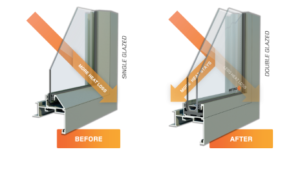I was looking through some plans the other day of a house that I built around 1991. It is a straight forward single storey, 3-bedroom house on a concrete slab with weatherboard cladding, long run roofing, standard aluminium joinery and single glazing. While the house is simple and robust and still stands today, when I compare it to more recent buildings I’ve been involved with, I can start to see the shortcomings.
Building science and research has shown us that our typical New Zealand homes are not particularly good at keeping the heat in during winter or keeping it out in summer and so therefore we end up having to use a lot of energy to keep the house warm, dry and comfortable. When I look at plans for new builds today, and while there might be a lot of criticism around the complexity and the added costs to comply with the new H1 standards, I am utterly convinced that what we will have in the future is buildings that perform far better than what we have built in the past.
One of the ideas that stands out for me is understanding the performance of the entire building and how all of its various elements combine to produce a building that is more energy efficient. We are starting to see our buildings as a whole rather than as a collection of individual elements and once we start doing that, we can also appreciate how important it is that all of these elements work together. When I look at the house I built in 1991, one of the things that stands out to me was that it seemed like double glazing was just not even an option back then. If it was available back then, it was cost prohibitive, it was difficult to find and most joinery wouldn’t accept the additional thickness of a double-glazed unit. By comparison today, double glazing is more commonplace and I’m grateful that the people living in those houses will have the benefits provided by the double glazing in their homes every day.
As we understand the benefits of double glazing more, we also realise that we can use it not just to keep heat in but also to help keep our houses cool in summer. We can use the double glazing to reduce the impact of noise from the outside world. We can use different types of double glazing in different parts of our house depending on what we need in those individual spaces. By understanding how our houses perform and what we need them to do, we can find specific solutions to all the challenges that houses face.

The research and development done at Metro Performance Glass contributes to a deeper understanding of the role Double Glazing has in building better homes for us all.
Go to Retro fit double glazing by Metro Glass for more information.







